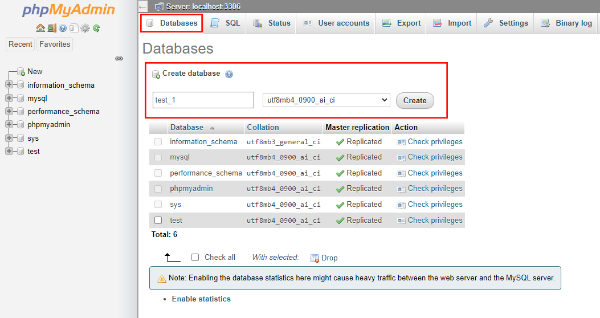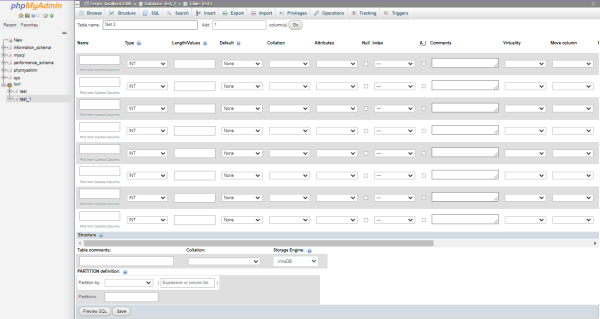LEMP + phpMyAdmin¶
In this article
Information
LEMP is an open source web application stack used to develop web applications. It includes the Linux operating system, the Nginx web server, the MySQL database, and the PHP web application language interpreter. Linux hosts and manages the server. Nginx acts as a web server that processes and responds to requests for resources. MySQL is a relational database that stores and processes data, and PHP is a programming language. phpMyAdmin is a free and open-source program written in PHP that allows for the management of MySQL through a web interface.
LEMP + phpMyAdmin. Key Features¶
- phpMyAdmin: It allows for easy and convenient management of MySQL, eliminating the need for command-line usage or complex scripts. It is commonly used on hosting environments for users’ database administration. It allows for viewing and managing databases, tables, fields, indexes, and other MySQL objects, executing SQL queries, and importing/exporting data in various formats (SQL, CSV, XML).
- High Performance: Nginx is a fast and scalable web server, while MySQL provides fast data access to achieve high app performance.
- Reliability and Security: Linux is a steady operating system with high hack resistance, and Nginx has many tools to protect against DDoS attacks and other threats.
- Scalability: Due to Nginx's modular architecture and MySQL's horizontal scale-out capability, LEMP scales easily to meet the needs of a growing business.
- Flexibility: PHP is a flexible and powerful programming language. It allows you to create dynamic web pages and applications with various features.
- Open and extensible code: All LEMP components are open source. It allows you to customize and adapt the software to meet your different needs.
- Ease of Use: Setting up LEMP is not a difficult process, especially for those who are familiar with Linux and web development.
Deployment Features¶
| ID | Compatible OS | VM | BM | VGPU | GPU | Min CPU (Cores) | Min RAM (Gb) | Min HDD/SDD (Gb) | Active |
|---|---|---|---|---|---|---|---|---|---|
| 21 | Ubuntu 22.04 | + | + | + | + | 1 | 1 | - | Yes |
- Installation of Nginx + SSL + Fail2ban + php-fpm + MariaDB in the hostkey.in zone
- Installed software:
- PhpMyAdmin.
After installation, you need to log into the server via SSH and add the website content to the /etc/nginx/sites-available directory.
Note
Unless otherwise specified, by default we install the latest release version of software from the developer's website or operating system repositories.
Getting started after deploying LEMP + phpMyAdmin¶
A notification will be sent to the e-mail specified during registration that the server is ready for work after paying for the order. It will contain the IP address of the VPS, as well as the login and password for the connection. Clients of our company manage the hardware in the server`s and API control panel - Invapi.
- The web interface will be available at:
https://lemp{Server_ID_from_Invapi}.hostkey.in/phpmyadmin - Login:
admin; - Password:
admin.
Database creation¶
To add a new database, follow these steps:
Access the phpMyAdmin interface and go to the Database tab. Enter a desired unique name for the new database in the Database field. Click the Create button:

Then re-enter the table name and the number of rows. When you are finished, click the Go button:

The database will be created and appear in the list of existing databases. Now you can create tables and work with data in it:

Note
For more information on working with the database, see the documentation of the developers.
Ordering a server with LEMP using the API¶
To install this software using the API, follow these instructions